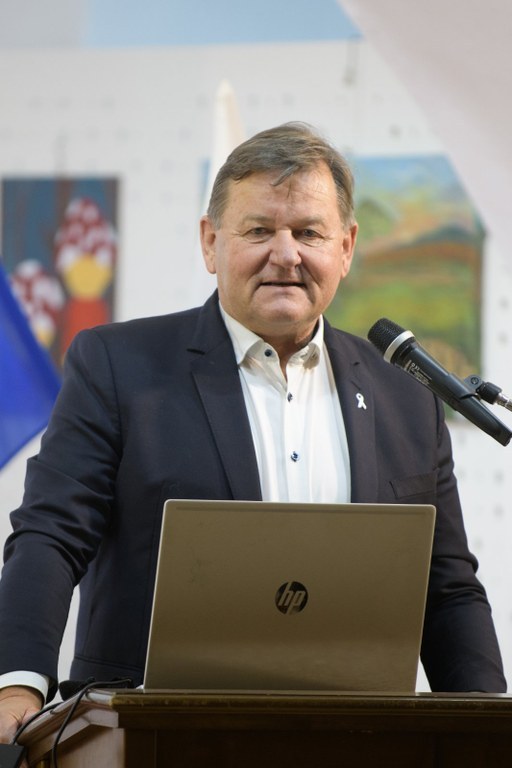
The final meeting of the Council of the region, the Development council of the region and the Podravje regional development network took place today in the outbuildings of the Ormož Castle. The discussion focused on future EU funding opportunities.
‘’Cohesion Policy plays an important role in supporting the development of EU members states and regions through the development funding it provides. According to the latest report on Cohesion Policy, each euro invested in Cohesion Policy generates 2.7 euros of return in GDP,’’ stressed Minister for Development and European Cohesion Policy, dr Aleksander Jevšek. He also presented Slovenia’s Cohesion Policy Programme for the period 2021-2027 which will make 3.26 million euros in Cohesion Policy funding available from 2023 onwards.
The Minister drew attention to the importance of balanced regional development, stressing the need to provide support to border regions. ‘’This is where Interreg funding comes into play’’, Minister Jevšek said, highlighting that ‘’a total of 94 million euros is made available for the programmes supporting cross-border cooperation with our neighbours. The first calls for proposals will presumably be out later this year or in the beginning of next year.’’
According to Minister Jevšek, Government Office for Development and European Cohesion Policy is preparing a set of implementing acts and rules in an effort to simplify the relevant administrative procedures, which will make project implementation easier. He stressed that the 2021-2027 period makes some 350 million euros more available to Slovenian municipalities for their projects. ‘’Agreement on the development of regions, Interreg programmes and Strategic Rural Development Plan all provide for a toolbox and mechanisms that will make it easier for small municipalities to access EU funding compared to the 2014-2020 period. We also call on small municipalities to join forces and work together,’’ added the Minister.
As for territorial approaches, regions will be able to access funding under the mechanisms of Integrated Territorial Investments ITI), Community-Led Local Development (CLLD) and Agreement on the development of regions. Project selection will build on the following criteria: implementation in a given integrated territory, selection following the bottom-up approach and amount of contribution relative to the development level of the cohesion region. Specifically, this means a contribution of the EU up of to 85% of eligible costs for the cohesion region Eastern Slovenia.
Uroš Rozman, Director of Podravje-Maribor Regional Development Agency, said: ‘’We are pleased that the Cohesion Policy Programme 2021-2027 aims to provide a further boost to the balanced development of the Podravje region and that funding will be available for projects of water and wastewater infrastructure. Municipalities cannot provide enough funding to finance such large-scale projects on their own; we raised this recurring issue in the past and we have finally been heard. We are also pleased to see that funding will be ring-fenced for network business incubators which will help us safeguard existing jobs and create new ones in the region. Local communities find green infrastructure in urban areas an important thematic area in the new programme. This is connected with further development of cycling infrastructure and roll-out of other measures promoting sustainable mobility in the region, which we strongly welcome.’’
Danijel Vrbnjak, Mayor of Ormož and President of the Council of region, said: ‘’We will focus on providing utility services, flood control, green transition, education, healthcare, senior care, social inclusion, labour market measures and diversification and greening of tourism offer.’’
Each year, the meeting is organized by the Podravje-Maribor Regional Development Agency, this year in association with the host municipality of Ormož.





